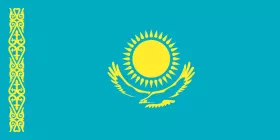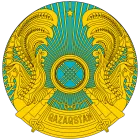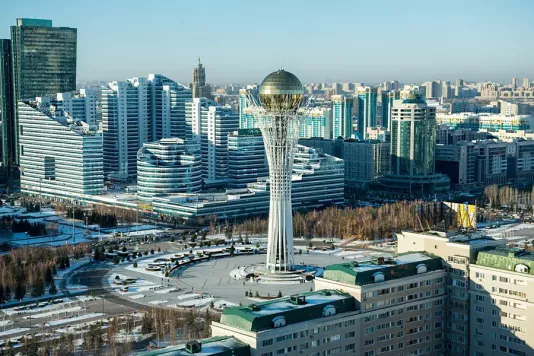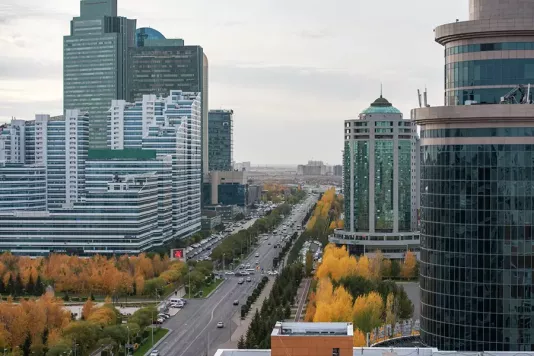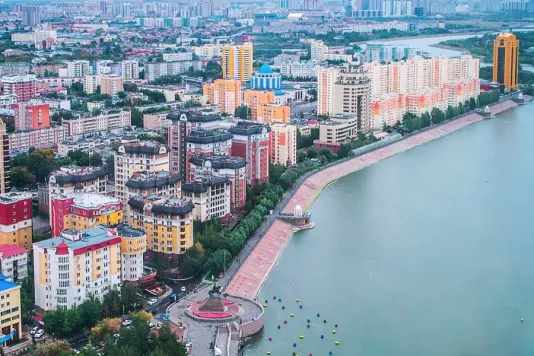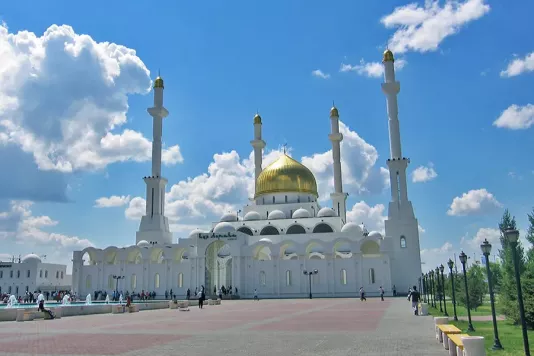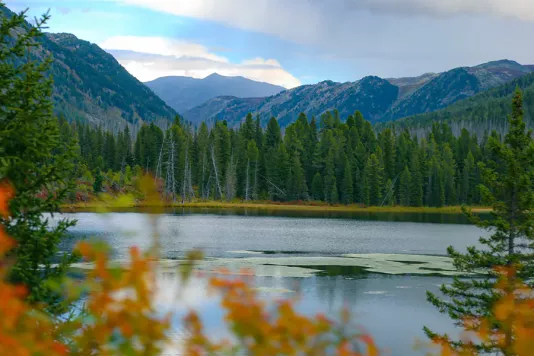Kazakhstan
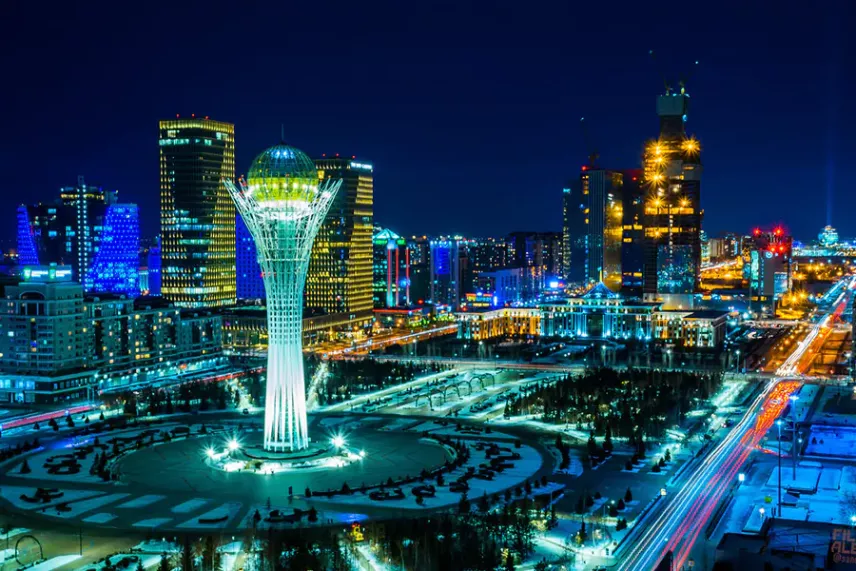
Geographical Location of Kazakhstan
Kazakhstan is the size of all of Western Europe and is the ninth largest country in the world. Kazakhstan borders Russia in the north, China in the east, and Kyrgyzstan and Uzbekistan in the south. Most of the country is a dry steppe landscape covered with grass and sand. In the east are the cold and deserted Altai Mountains. The country has no coastline and has a continental climate with cold winters and hot summers.
When the country was part of the Soviet Union, Soviet authorities used the region to test nuclear weapons and dump toxic waste. Some areas are radioactive and many rivers are heavily polluted. The Soviet Union also used the Aral Sea to irrigate cotton plantations. This caused such enormous destruction that the Aral Sea has been called one of the world's greatest environmental disasters. The dry sea still contains chemical pollutants that are carried by the wind. Extensive environmental problems pose a serious risk to public health.
Brief History of Kazakhstan
Since the Stone Age, Kazakhstan has been inhabited by various nomadic tribes. In the 15th century, the tribes developed a common language, culture and economy. Historians believe that the Kazakhs were probably the first to learn how to domesticate horses and ride them. The threat of a Mongol invasion at the beginning of the 18th century forced the tribes to seek protection from the Russian Tsar. The Kazakhs considered this union to be temporary, while the Russians perceived Kazakhstan as a new part of the country.
In 1920, Kazakhstan became a Russian Republic, and in 1936, a Soviet Republic. A communist government was created. The communist regime carried out forced collectivization of the land, which led to famine among the nomadic tribes and the death of more than a million Kazakhs. The Soviet Union built large prisoner of war camps in the area, and millions of people were forced into camps and forced to work. The Soviet Union later launched a project to cultivate much of the land in the north. This resulted in many Russians moving in to take over these territories and many nomadic tribes losing their livelihoods. Collectively, these events resulted in so many new residents that the Kazakhs became a minority. Kazakhstan became independent in 1991 as a result of the collapse of the Soviet Union. A significant portion of the resettled population then returned to their countries of origin.
Society and Politics of Kazakhstan
Formally, Kazakhstan today is a democratic republic, but in practice it is considered an authoritarian state. The President is the head of state and has great power. The president is the supreme commander of the armed forces and can veto parliamentary legislation. The president appoints the government and the prime minister and can dissolve them if he wants. He can also dissolve parliament, which is elected every five years. The Constitutional Court was replaced by a Constitutional Council, in which the president has veto power.
After gaining independence in 1991, the country had the same president for almost 30 years. In 2019, the president resigned and chose his successor - Kassym-Jomart Tokayev. President Tokayev has since won subsequent elections. The election was criticized by international election observers. They believe that there was widespread election fraud and a lack of freedom of expression, and therefore the elections did not meet international standards. None of the elections held in Kazakhstan were recognized as completely free and fair.
In Kazakhstan, the dominant media are either state-owned or owned by pro-government companies. Freedom of speech and assembly was restricted, and several opposition figures were jailed.
Economy and Trade of Kazakhstan
Kazakhstan is becoming an economic leader among the countries of the former USSR. The orderly economy and market-liberal legislation attracted foreign investment, and after the transition from a planned economy to a market economy in the 1990s, the economy became stable. Major discoveries of oil and gas reserves in the Caspian Sea led to rapid economic growth, and the country was able to repay its loans to the International Monetary Fund. The country has experienced slightly lower growth since the 2008–09 financial crisis and the 2014 oil price crash. This particularly affected the country's poor.
Oil pipelines made it easier to export oil. Exports of raw materials such as natural gas and minerals such as copper, iron and gold are also important sources of income. However, Kazakhstan is characterized by poverty, widespread corruption and high unemployment. Essentially, it is a small group that has benefited from privatization and economic growth. Most of the population is engaged in agriculture and is engaged in raising sheep, pigs and cattle, as well as growing grain and cotton.
